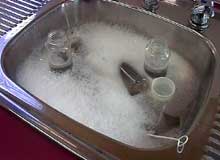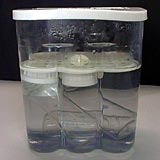Behaviour
Caring for babies
Bottle feeding
Changing a nappy
Cleaning and sterilising bottles
Daily cleaning tasks
Helping new children settle in
Preparing for a nappy change
Sleep patterns – babies
Sleep routines – babies
Toilet training
Caring for children
Allowing time for practice
Dressing/undressing
Mealtimes
Nappy change
Packing away/caring for the environment
Sleep/rest time
Toileting
Common self-help milestones
Tips for sleep and rest time
Self image
Communication
Body language
Limits and guidelines
Ways children communicate
Greeting children and families
Modelling appropriate communication
Questioning
Verbal and non–verbal communication
Acknowledging children's feelings
Listening attentively
Communicating with Aboriginal and Torres Strait Islander parents/carers
Development
Allowing time for practice
Dressing/undressing
Mealtimes
Nappy change
Packing away/caring for the environment
Sleep/rest time
Toileting
Common self-help milestones
Creative development
Language development
Modelling positive relationships
Physical development
Sharing and taking turns
Sleep patterns – babies
Sleep routines – babies
Encourage independent problem solving
Fundamental movement skills
Health, hygiene and safety
Coping with stress
Correct manual handling principles
Daily cleaning tasks
Hand washing
Hand washing poster
Manual handling overview
Toilet training
Safety checklist
Learning experiences and play
Environmentally friendly learning experiences
Learning experiences for different development areas
Creative resource materials
Arranging the environment to facilitate learning and pleasure
Indoors and outdoor areas
Creating a positive physical environment
Legal and ethical issues
Child abuse case studies
How do I recognise when a child or young person is at risk?
Tips on dealing with disclosures
Observation methods
Arranging Experiences (PDF 351Kb)
Recording observations
Rules for making observations
What you can learn from observations
Programming
Children’s interests, strengths, needs and skills
Extending the children’s interest in dinosaurs
Objective observation
Planning an OSHC environment
Behavior management plan
Planning enjoyable experiences
Planning experiences for 0 - 2 years age group
Planning experiences for 2 - 3 years age group
Planning experiences for 3 - 5 years age group
Cleaning and sterilising bottles
When working with babies a high level of hygiene needs to be maintained to reduce the spread of illness and germs. This means that you need to have high standards of hygiene practices and thoroughly clean and sterilise the utensils, bottles and toys of the babies in your care regularly.
Cleaning
The first step is cleaning. All bottles, comforters and utensils need to be thoroughly cleaned.

- Rinse bottles, teats and all related equipment (such as strainer funnels, teats, jugs, knives and spoons) in cold running water.
- When items are free of milk, or other materials, fill the sink with warm water.
- Add detergent.
- Wash all of the equipment thoroughly. Be sure to get into all gaps and crevices, and use a bottle brush to thoroughly clean the bottles.
- Rinse thoroughly in cold water and ensure detergent is well rinsed off.
- Use salt to clean the teats again. Fill the inside of each teat with salt and rub between your index finger and thumb. A small teat brush may also be used.
- Rinse the teat thoroughly in cold water, squeezing the water through the teat.
Sterilising
Before equipment is sterilised, they must be cleaned thoroughly using the above procedure.

Sterilising system
Note: Metal is not suitable for sterilising in a sterilising system, so only use plastic or glass.
- Pour the correctly measured amount of water into the sterilising container. You can find this in the instructions on the sterilising solution.
- Add the correctly measured amount of sterilising solution to the water. You can find this in the instructions on the sterilising solution.
- Place all of the items that you wish to sterilise in the containers ensuring they are completely immersed with no air bubbles. Be sure to wash your hands before putting them in the water.
- Place a plastic sub merger over the items to ensure the equipment is submerged under the water.
- Once the equipment has been soaking for a minimum of 1 hour, remove it and store it in a separate container until required.
- Every 24 hours wash the sterilising container out and start again with fresh solution and water.
Sterilising using boiling water
Note: Only metal or glass should be used when sterilising in boiling water.
- Place all items into a saucepan and cover thoroughly with cold water.
- Bring to the boil and continue boiling for 10 minutes, then let cool naturally.
- Once they are cool remove all of the items from saucepan.
- Items will only remain sterilised for 24 hours, after that time they will need to be sterilised again.
Sterilising using the microwave
Microwave sterilising units are another option. They use steam to sterilise the items. This microwave method should only be used in conjunction with the sterilising kits. Just microwaving a bottle or utensil by itself will not sterilise it. For further information read the directions provided on the label of the microwave sterilising kit.
For further information on cleaning and sterilising baby bottles you could look at the following website:.
Search for bottle feeding, then click on the link titled Parenting and Child Health - Health Topics - Nutrition - Bottle feeding - Cleaning and sterilising.